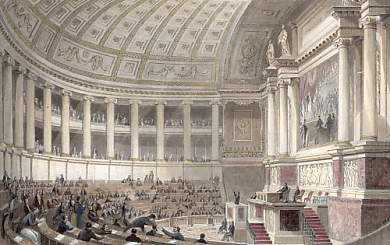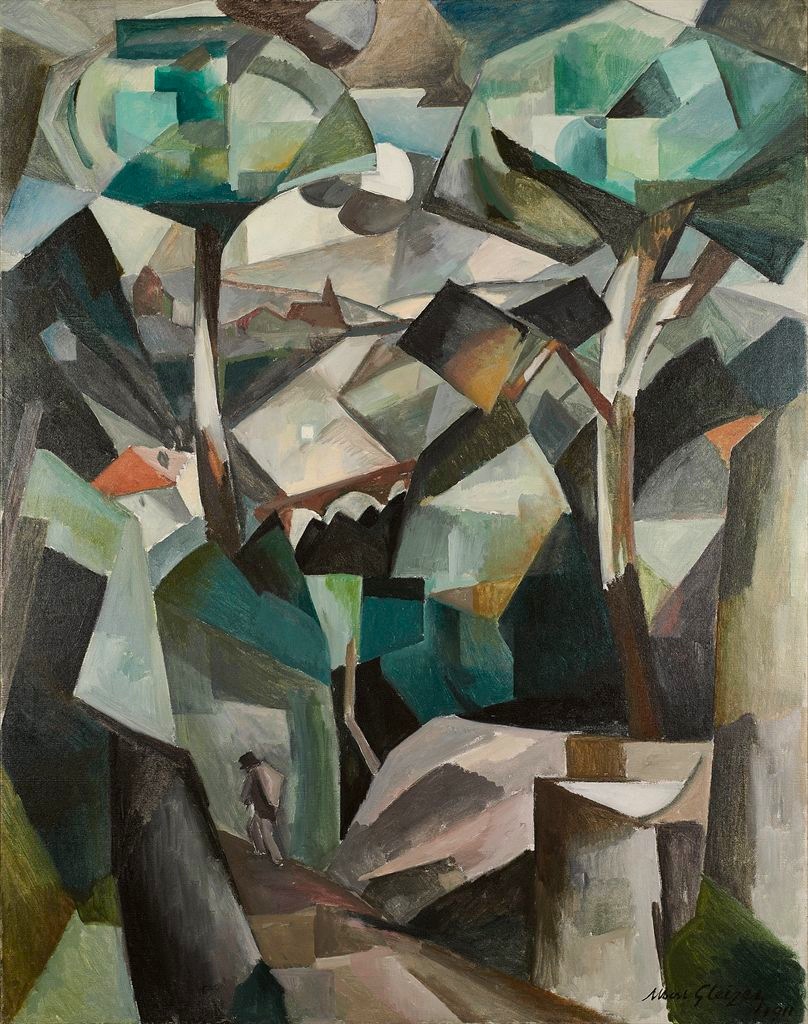|
Danseuse (Csaky)
''Danseuse'', also known as ''Femme à l'éventail'', or ''Femme à la cruche'', is an early Cubist, Proto-Art Deco sculpture created in 1912 by the Hungarian avant-garde sculptor Joseph Csaky (1888–1971). This black and white photograph from the Csaky family archives shows a frontal view of the original 1912 plaster. ''Danseuse'' was exhibited in Paris at the 1912 Salon d'Automne (n. 405), an exhibition that provoked a ''succès de scandale'' and resulted in a xenophobic and anti-modernist quarrel in the French National Assembly. The sculpture was then exhibited at the 1914 Salon des Indépendants entitled ''Femme à l'éventail'' (n. 813); and at Galerie Moos, Geneva, 1920, entitled ''Femme à la cruche''.Marcilhac, Félix, 2007, ''József Csáky, Du cubisme historique à la figuration réaliste, catalogue raisonné des sculptures'', Les Editions de l'Amateur, Paris Description ''Danseuse'' is a plaster sculpture carved in a vertical format. The work represents a woman standi ... [...More Info...] [...Related Items...] OR: [Wikipedia] [Google] [Baidu] |
Joseph Csaky
Joseph Csaky (also written Josef Csàky, Csáky József, József Csáky and Joseph Alexandre Czaky) (18 March 1888 – 1 May 1971) was a Hungarian avant-garde artist, sculptor, and graphic artist, best known for his early participation in the Cubist movement as a sculptor. Csaky was one of the first sculptors in Paris to apply the principles of pictorial Cubism to his art. A pioneer of modern sculpture,Edith Balas, 1998, ''Joseph Csaky: A Pioneer of Modern Sculpture'' Philadelphia: American Philosophical Society Csaky is among the most important sculptors of the early 20th century. [...More Info...] [...Related Items...] OR: [Wikipedia] [Google] [Baidu] |
Auguste Rodin
François Auguste René Rodin (12 November 184017 November 1917) was a French sculptor, generally considered the founder of modern sculpture. He was schooled traditionally and took a craftsman-like approach to his work. Rodin possessed a unique ability to model a complex, turbulent, and deeply pocketed surface in clay. He is known for such sculptures as ''The Thinker'', ''Monument to Balzac'', '' The Kiss'', ''The Burghers of Calais'', and ''The Gates of Hell''. Many of Rodin's most notable sculptures were criticized, as they clashed with predominant figurative sculpture traditions in which works were decorative, formulaic, or highly thematic. Rodin's most original work departed from traditional themes of mythology and allegory. He modeled the human body with naturalism, and his sculptures celebrate individual character and physicality. Although Rodin was sensitive to the controversy surrounding his work, he refused to change his style, and his continued output brought increas ... [...More Info...] [...Related Items...] OR: [Wikipedia] [Google] [Baidu] |
Man On A Balcony (Gleizes)
''Man on a Balcony'' (also known as ''Portrait of Dr. Théo Morinaud'' and L'Homme au balcon''), is a large oil painting created in 1912 by the French artist, theorist and writer Albert Gleizes (1881–1953). The painting was exhibited in Paris at the Salon d'Automne of 1912 (no. 689). The Cubist contribution to the salon created a controversy in the French Parliament about the use of public funds to provide the venue for such 'barbaric art'. Gleizes was a founder of Cubism, and demonstrates the principles of the movement in this monumental painting (over six feet tall) with its projecting planes and fragmented lines. The large size of the painting reflects Gleizes's ambition to show it in the large annual salon exhibitions in Paris, where he was able with others of his entourage to bring Cubism to wider audiences.Michael R. Taylor, from Masterpieces from the Philadelphia Museum of Art: Impressionism and Modern Art (2007) In February 1913, Gleizes and other artists introduced the ... [...More Info...] [...Related Items...] OR: [Wikipedia] [Google] [Baidu] |
Chambre Des Députés
Chamber of Deputies (french: Chambre des députés) was a parliamentary body in France in the nineteenth and twentieth centuries: * 1814–1848 during the Bourbon Restoration and the July Monarchy, the Chamber of Deputies was the lower house of the French Parliament, elected by census suffrage. * 1875–1940 during the French Third Republic, the Chamber of Deputies was the legislative assembly of the French Parliament, elected by universal suffrage. When reunited with the Senate in Versailles, the French Parliament was called the National Assembly (''Assemblée nationale'') and carried out the election of the president of the French Republic. During the Bourbon Restoration Created by the Charter of 1814 and replacing the Corps législatif, which existed under the First French Empire, the Chamber of Deputies was composed of individuals elected by census suffrage. Its role was to discuss laws and, most importantly, to vote taxes. According to the Charter, deputies were elected ... [...More Info...] [...Related Items...] OR: [Wikipedia] [Google] [Baidu] |
Louis Vauxcelles
Louis Vauxcelles (born Louis Meyer; 1 January 187021 July 1943) was a French art critic. He is credited with coining the terms '' Fauvism'' (1905) and ''Cubism'' (1908). He used several pseudonyms in various publications: Pinturrichio, Vasari, Coriolès, and Critias. Fauvism Vauxcelles was born in Paris. He coined the phrase 'les fauves' (translated as 'wild beasts') in a 1905 review of the Salon d'Automne exhibition to describe in a mocking, critical manner a circle of painters associated with Henri Matisse. As their paintings were exposed in the same room as a Donatello sculpture of which he approved, he stated his criticism and disapproval of their works by describing the sculpture as "a Donatello amongst the wild beasts." Henri Matisse's '' Blue Nude (Souvenir de Biskra)'' appeared at the 1907 Indépendants, entitled ''Tableau no. III''. Vauxcelles writes on the topic of ''Nu bleu'': I admit to not understanding. An ugly nude woman is stretched out upon grass of an opaque ... [...More Info...] [...Related Items...] OR: [Wikipedia] [Google] [Baidu] |
Impressionism
Impressionism was a 19th-century art movement characterized by relatively small, thin, yet visible brush strokes, open Composition (visual arts), composition, emphasis on accurate depiction of light in its changing qualities (often accentuating the effects of the passage of time), ordinary subject matter, unusual visual angles, and inclusion of movement as a crucial element of human perception and experience. Impressionism originated with a group of Paris-based artists whose independent exhibitions brought them to prominence during the 1870s and 1880s. The Impressionists faced harsh opposition from the conventional art community in France. The name of the style derives from the title of a Claude Monet work, ''Impression, soleil levant'' (''Impression, Sunrise''), which provoked the critic Louis Leroy to coin the term in a Satire, satirical review published in the Parisian newspaper ''Le Charivari''. The development of Impressionism in the visual arts was soon followed by analogo ... [...More Info...] [...Related Items...] OR: [Wikipedia] [Google] [Baidu] |
Musée National D'Art Moderne
The Musée National d'Art Moderne (; "National Museum of Modern Art") is the national museum for modern art of France. It is located in Paris and is housed in the Centre Pompidou in the 4th arrondissement of the city. In 2021 it ranked 10th in the List of most visited art museums in the world, with 1,501,040 visitors. It is one of the largest museums for modern and contemporary art. In 1937, the Musée National d'Art Moderne succeeded the Musée du Luxembourg, established in 1818 by King Louis XVIII as the first museum of contemporary art created in Europe, devoted to living artists whose work was due to join the Louvre 10 years after their death. Imagined as early as 1929 by Auguste Perret to replace the old Palais du Trocadero, the construction of a museum of modern art was officially decided in 1934 in the western wing of the Palais de Tokyo. Completed in 1937 for that year's International Exhibition of Arts and Technology, it was temporarily used for another purpose, si ... [...More Info...] [...Related Items...] OR: [Wikipedia] [Google] [Baidu] |
Albert Gleizes
Albert Gleizes (; 8 December 1881 – 23 June 1953) was a French artist, theoretician, philosopher, a self-proclaimed founder of Cubism and an influence on the School of Paris. Albert Gleizes and Jean Metzinger wrote the first major treatise on Cubism, ''Du "Cubisme"'', 1912. Gleizes was a founding member of the Section d'Or group of artists. He was also a member of ''Der Sturm'', and his many theoretical writings were originally most appreciated in Germany, where especially at the Bauhaus his ideas were given thoughtful consideration. Gleizes spent four crucial years in New York, and played an important role in making America aware of modern art. He was a member of the Society of Independent Artists, founder of the Ernest-Renan Association, and both a founder and participant in the Abbaye de Créteil. Gleizes exhibited regularly at Léonce Rosenberg's ''Galerie de l’Effort Moderne'' in Paris; he was also a founder, organizer and director of Abstraction-Création. From the mid-1 ... [...More Info...] [...Related Items...] OR: [Wikipedia] [Google] [Baidu] |
Grand Palais
The Grand Palais des Champs-Élysées ( en, Great Palace of the Elysian Fields), commonly known as the Grand Palais (English: Great Palace), is a historic site, exhibition hall and museum complex located at the Champs-Élysées in the 8th arrondissement of Paris, France. Construction of the Grand Palais began in 1897 following the demolition of the Palais de l'Industrie (Palace of Industry) to prepare for the Universal Exposition of 1900. That exposition also produced the adjacent Petit Palais and Pont Alexandre III. The building was designed to be a large-scale venue for official artistic events. A pediment on the building refers to this function with an inscription that reads, "a monument dedicated by the Republic to the glory of French art." Designed according to Beaux-Arts tastes, the building features ornate stone facades, glass vaults and period innovations that included iron and light steel framing and reinforced concrete. It is listed as a historic monument (''monu ... [...More Info...] [...Related Items...] OR: [Wikipedia] [Google] [Baidu] |
Paul Cézanne
Paul Cézanne ( , , ; ; 19 January 1839 – 22 October 1906) was a French artist and Post-Impressionism, Post-Impressionist painter whose work laid the foundations of the transition from the 19th-century conception of artistic endeavour to a new and radically different world of art in the 20th century. Cézanne is said to have formed the bridge between late 19th-century Impressionism and the early 20th century's new line of artistic enquiry, Cubism. While his early works are still influenced by Romanticism – such as the murals in the Bastide du Jas de Bouffan, Jas de Bouffan country house – and Realism, he arrived at a new pictorial language through intensive examination of Impressionist forms of expression. He gave up the use of Perspective (graphical), perspective and broke with the established rules of Academic Art and strived for a renewal of traditional design methods on the basis of the impressionistic color space and color modulation principles. Cézanne's often re ... [...More Info...] [...Related Items...] OR: [Wikipedia] [Google] [Baidu] |




.jpg)


